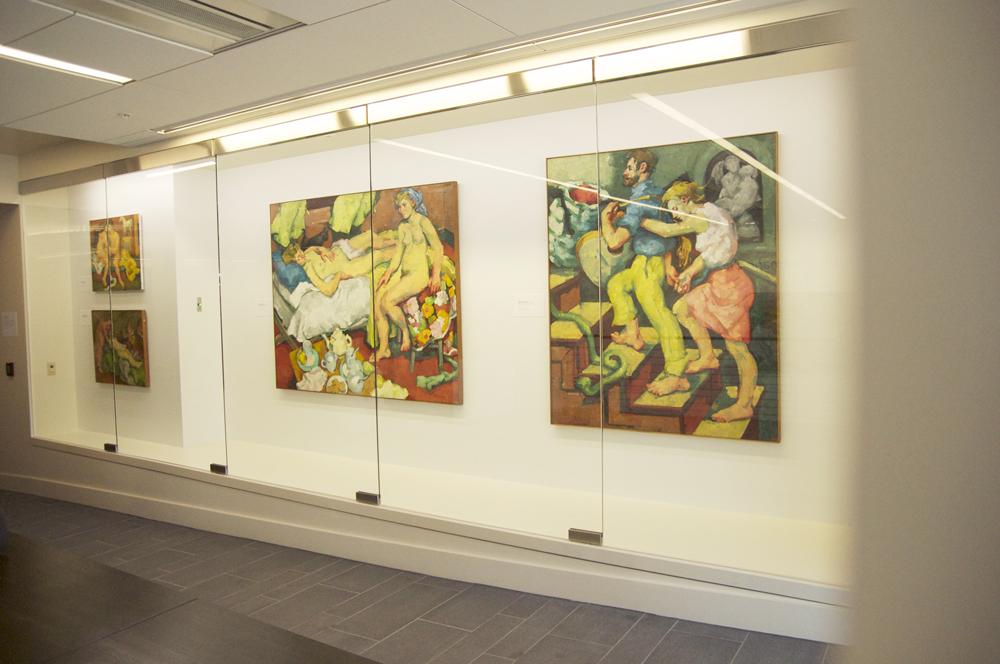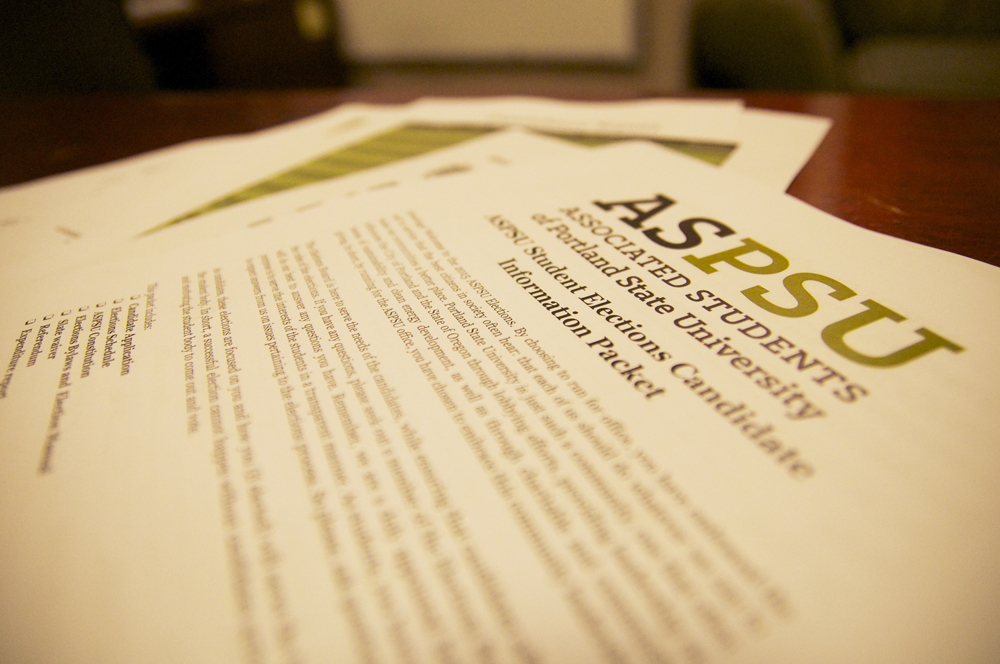Although the room echoes with band practice and the applause from recitals ending, students are not just moving from class to class in the Broadway Lobby Gallery. They are also stopping to enjoy the exceptional paintings of “Lyric Truth: Paintings, Drawings and Embroideries by Rosemarie Beck.”
On Feb. 18, the gallery in Lincoln Hall opened its paintings portion of the multidisciplinary exhibition of Beck’s work. Curated by Portland State faculty members Patricia Schechter, professor of history, and Sue Taylor, professor of art history, the PSU portion of the exhibition will run until May 3.
In addition to Beck’s paintings on view at PSU, the Oregon Jewish Museum and Center for Holocaust Education is showcasing Beck’s embroideries, and Portland Community College’s Rock Creek campus is showing her drawings in the Helzer Art Gallery, a culmination of her work that will come together on March 5 for a multidisciplinary symposium at PSU.
Beck was a trained violinist, who described the tie between language and art as “the lyric.”
“[Beck] referred to this bond as live flux, the lyric is a way to have something between everyday mundane, known and chaos, and bring it together,” Schechter said. “Something amazing is possible in this life, art—the lyric is a way of bringing it to light.”
Beck began as an abstract expressionist during the style’s heyday in the 1950s, but transitioned to more traditional themes by the end of the decade.
“She became disillusioned,” Taylor said. “She wasn’t convinced that abstraction could uphold the artistic message. She exhausted what she could do in that movement.”
The transition from the popular art movement was a risky one for Beck.
“She was taking her career into her hands and she paid a price, remaining an outlier in the art world,” Schechter said.
But Beck found inspiration in literature and the imagery of classicism.
“She was a woman artist in a man’s world,” Taylor said. “Her turn to figure painting was grounds for her introduction of nudes, mythology and also Shakespeare.”
These classical themes revealed images that she could relate to as a female artist and one who was going against the style of the period, as shown in her works inspired by Shakespeare’s plays, such as Antigone and The Tempest.
“I have a feeling that on some level, Beck’s painting of The Tempest may be about patriarchy,” Taylor said. “In the play, Prospero controls Ariel’s liberty and manipulates his daughter Miranda. These are the characters Beck chose to portray together.”
Although Beck turned to the classics for inspiration, she always considered herself to be an abstract painter.
“She believed that it is wrong to assume that the body is real,” Schechter said.
It’s a philosophy that becomes clear upon viewing her work, which displays the movement of forms through vivid color and texture similar to fantastic reflections in a pool.
Schechter said Beck painted for 20 years until her body broke down under her. When she could no longer stand at the easel for long periods of time, she turned to embroidery.
“Embroidery was a way for Beck to express herself in a lighter mode and a way for her to experiment with color and compositions,” said Judith Margles, the director of the Oregon Jewish Museum and Center for Holocaust Education.
“Nonetheless, we take great pleasure in seeing these magnificent works, particularly in the context of the era in which she worked and in juxtaposition with her other forms of art making,” Margles said.
Beck’s embroidery will be on exhibit at the museum until March 22.
“It seems she was naturally imbued with the art of storytelling,” Margles said.
The embroidered works are so similar to Beck’s paintings and the technique she used to make them, they can only be described as threadstrokes.
Beck’s heritage plays a key role in the development of her work, as the daughter of Hungarian-Jewish immigrants to New York City.
“Judaism is based on storytelling,” Margles said. “You can look at one of the embroideries and see the story taking place.”
The exhibition is significant for Beck’s work and the importance of female artists.
“I hope it starts a conversation about who we remember and who we forget, why we love art, and why there are so few women painters remembered compared to male painters,” Schechter said.
Schechter said the works of women artists need to be more regularly collected in exhibitions.
“[Beck] reminds us that they are less centered in museums, and they deserve another look.”






